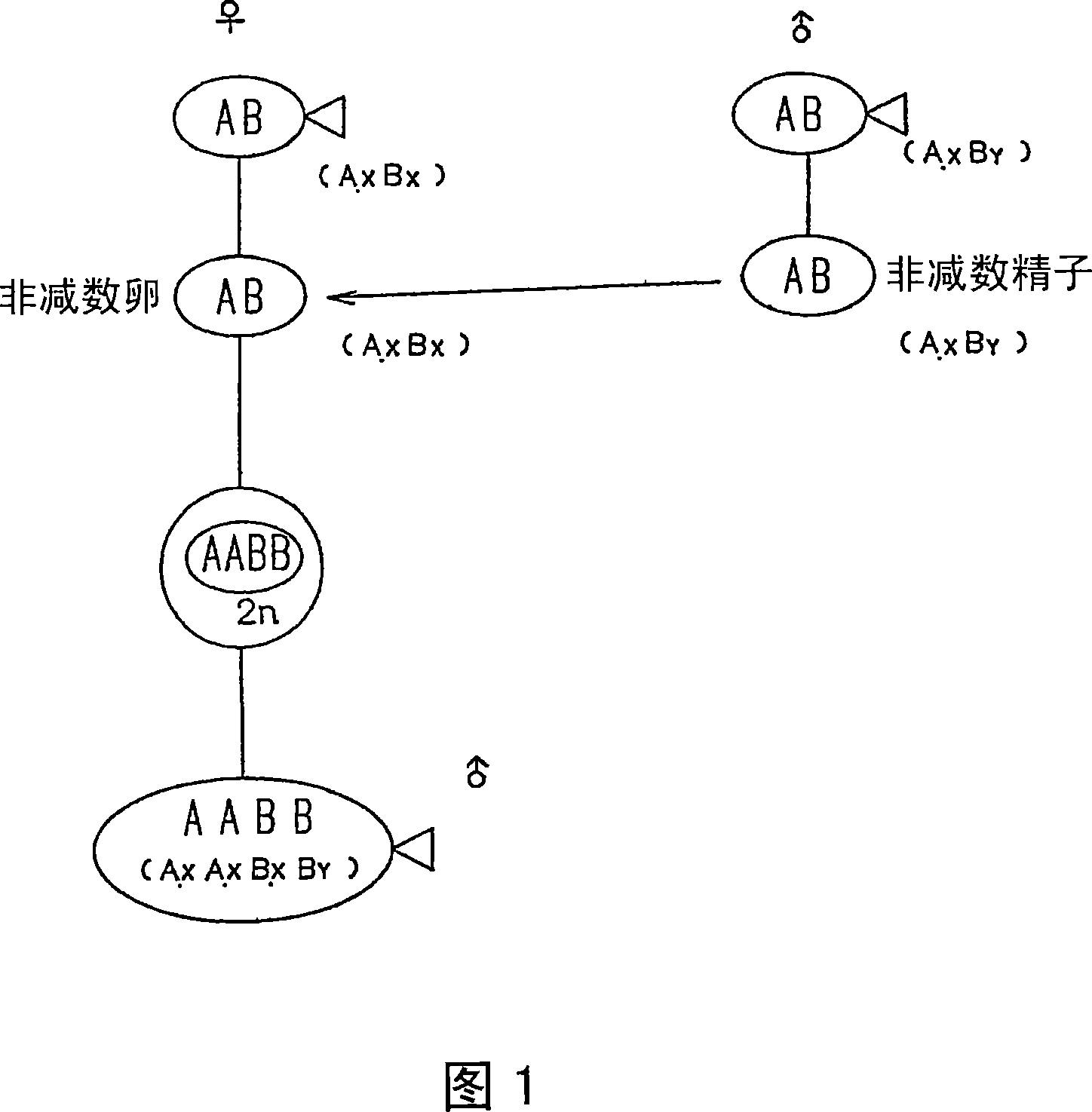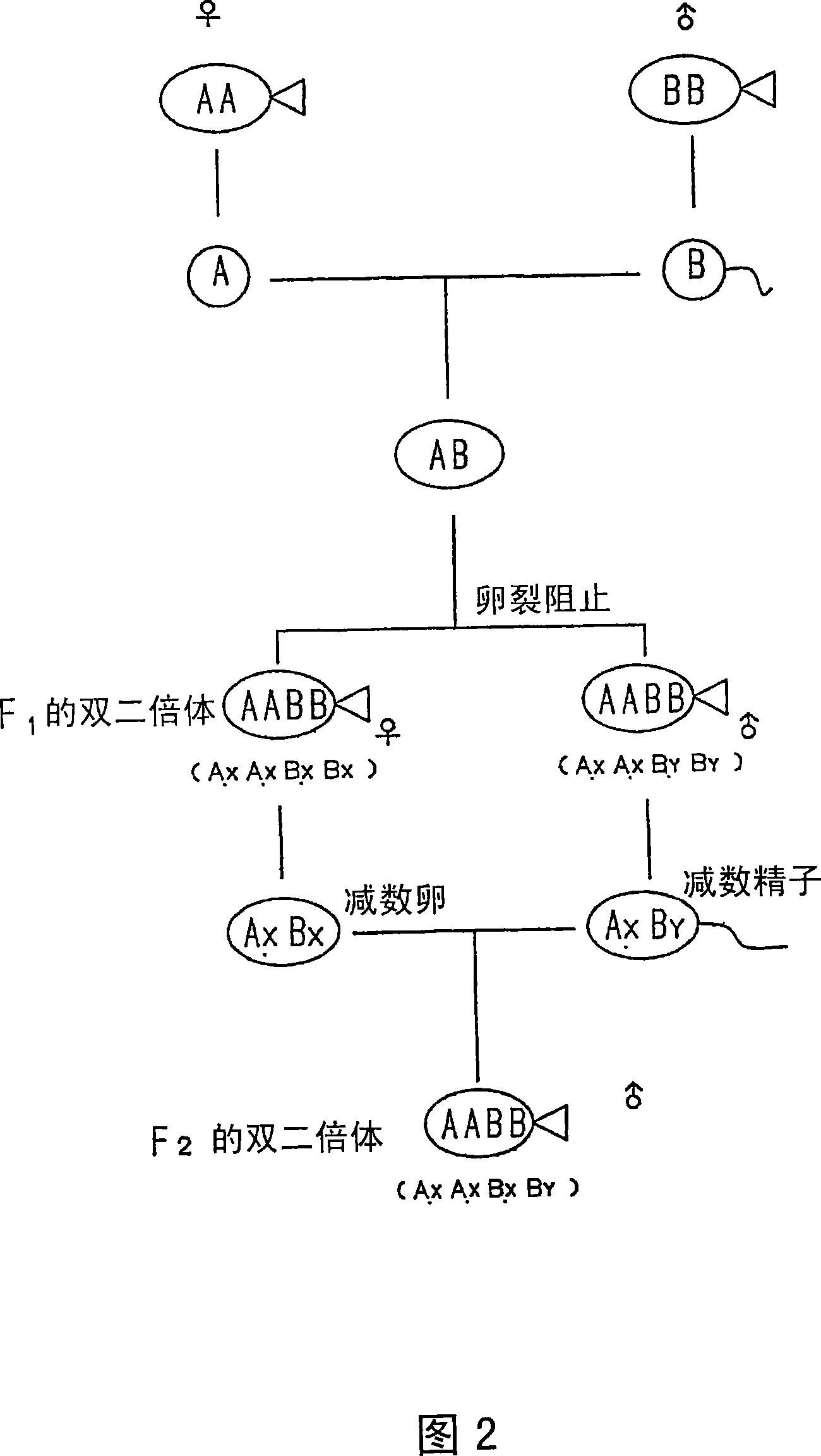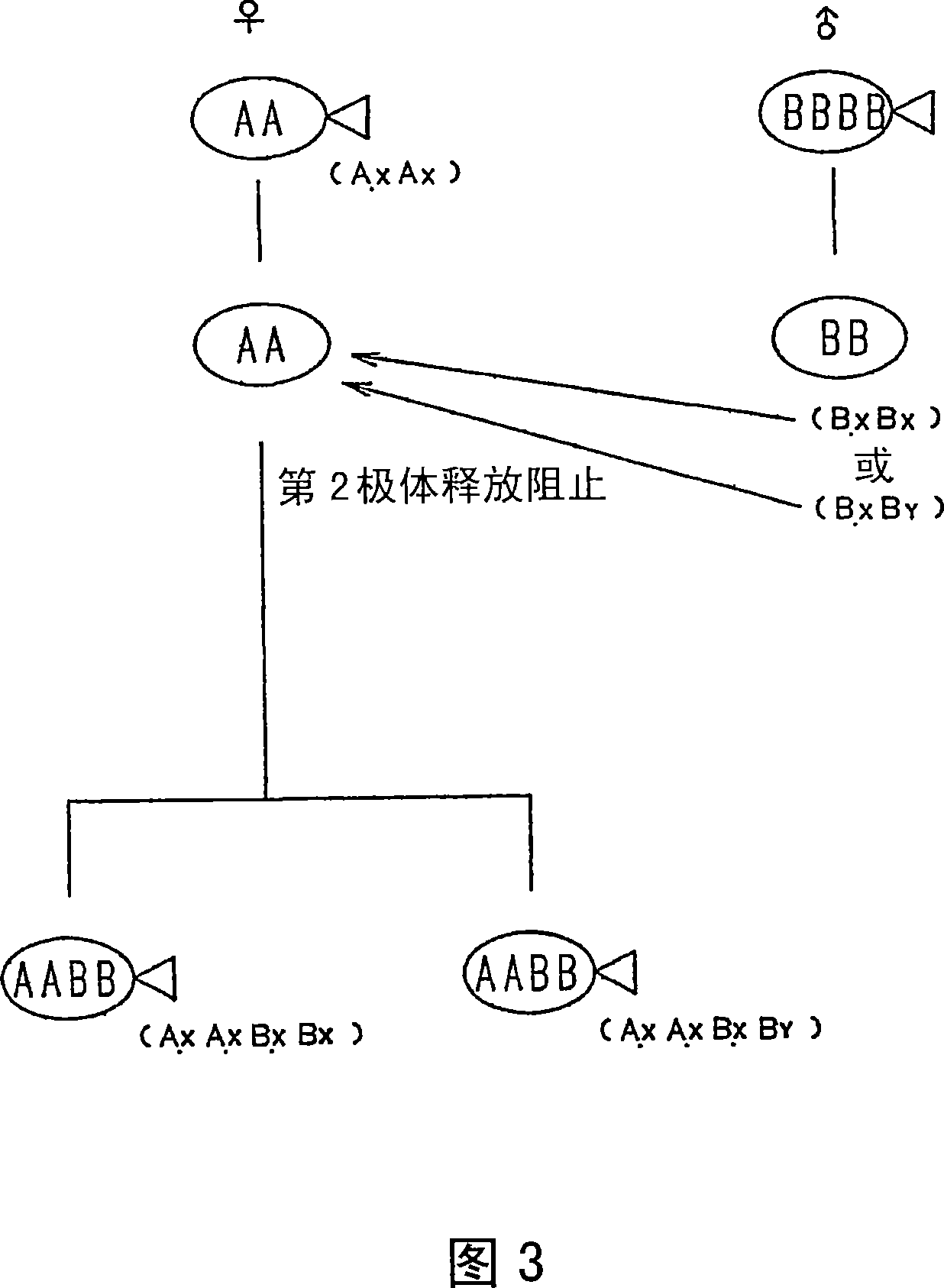Amphiploid aquatic animal and method of breeding same
An aquatic animal, diploid technology, applied in animal husbandry and other directions to achieve the effect of restoring reproductive capacity
- Summary
- Abstract
- Description
- Claims
- Application Information
AI Technical Summary
Problems solved by technology
Method used
Image
Examples
Embodiment 1
[0060] Example 1 is a double diploid using a cross between goldfish and koi,
[0061] The inventor crossed the female of the koi carp with the male of the goldfish, and successfully produced a diploid fish with XXXY-type sex chromosomes with reproductive ability.
[0062] background
[0063] Koi has a variety of colors such as gold and silver that cannot be seen in goldfish. Therefore, it is necessary to introduce the color of koi to goldfish. Goldfish and carp have an inter-genus relationship, so hybrids cannot form normal gametes. However, female hybrids sometimes produce non-reduced eggs in which chromosomes are not reduced. On the other hand, male hybrids cannot produce non-reduced sperm, but a large number of hybrid F1 were studied, and it was found that there were hybrid F1 that produced non-reduced sperm.
[0064] The 7 individuals surveyed in the females all produced non-reduced eggs, while the 15 individuals surveyed in the males were all non-reproductive. It is clear tha...
Embodiment 2
[0078] In this example, rainbow trout was crossed with angler salmon to obtain the diploid of the present invention 3.
[0079] The double diploid described in the second aspect of the present invention is a type XXXY produced by preventing the second cleavage of hybrid eggs, temporarily obtaining the first generation of double diploids, and fertilizing the reduced eggs and sperm Double diploid. The inventors discovered that the mechanism of the multiplication treatment considered to be the prevention of the first cleavage in order to produce tetraploid is actually not the case, and it is the prevention of the second cleavage. This is revealed by the following experiment.
[0080] The fertilized eggs of rainbow trout or hybrid eggs of rainbow trout and shovel salmon were cultivated at 10 degrees, and after 5 hours and 15 minutes, treated with 650 atmospheres of water pressure for 6 minutes, and then bred at 10 degrees.
[0081] Immediately before and after the treatment, fix the e...
PUM
 Login to View More
Login to View More Abstract
Description
Claims
Application Information
 Login to View More
Login to View More - R&D
- Intellectual Property
- Life Sciences
- Materials
- Tech Scout
- Unparalleled Data Quality
- Higher Quality Content
- 60% Fewer Hallucinations
Browse by: Latest US Patents, China's latest patents, Technical Efficacy Thesaurus, Application Domain, Technology Topic, Popular Technical Reports.
© 2025 PatSnap. All rights reserved.Legal|Privacy policy|Modern Slavery Act Transparency Statement|Sitemap|About US| Contact US: help@patsnap.com



